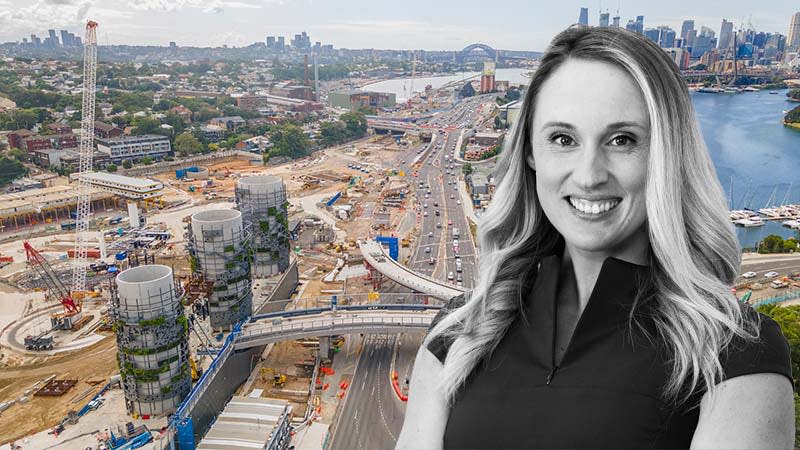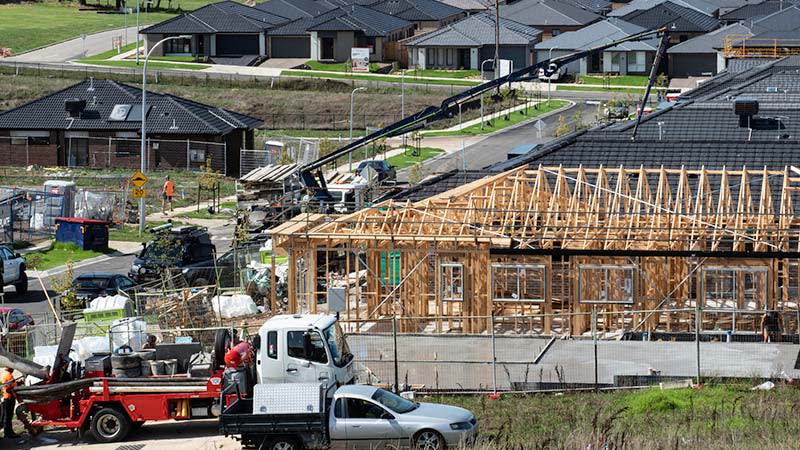
Property developers and builders are abandoning residential projects at record rates while government-backed infrastructure construction remains largely untouched by market pressures.
As government pours $500 billion into infrastructure projects, Australia’s residential construction sector faces its highest rate of project abandonments.
Hubexo APAC president Ashleigh Porter said the construction landscape had become increasingly volatile, with developers forced to reassess their portfolios amid challenging economic conditions.
“Elevated inflation since mid-2021, labour shortages and high construction costs are among the primary factors undermining project viability,” Porter told The Urban Developer.
Porter said stricter lending conditions and pressure from creditors had further complicated financing, leading many developers to scale back operations or shift towards asset-preservation strategies.
According to the latest BCI Central Construction Outlook Report, delays across project lifecycles remain the primary challenge, affecting 74 per cent of builders and 62 per cent of developers.
For developers, the cost of products and equipment ranks as the second most significant hurdle at 54 per cent, followed by low margins at 42 per cent.
Slattery Australia partnerships and innovation director Sarah Slattery said “delays remain a major concern … compounded by labour shortages, regulatory compliance issues and economic fluctuations, which can lead to increased costs and reduced profitability”.
The construction industry is experiencing an overall decline in deferral and abandonment rates but specific sectors and regions are showing varying trends influenced by economic factors and government policies.
While residential projects face high rates of deferral and abandonment, the industrial, infrastructure and transport sectors reflect the lowest rates, benefiting from government funding at federal, state and local level.

Government-funded projects are proving particularly resilient, with state governments managing more than 8000 projects valued at more than $500 billion.
Porter said government support had been “particularly effective in the industrial and transport sectors”, where deferrals and abandonments remained low at 1.9 per cent and 2 per cent respectively as of the third quarter of 2024.
Regional analysis revealed significant variations across Australia, with state-specific economic pressures creating distinct challenges across different sectors.
Victoria has emerged as the state with the highest residential project abandonment rate at 8.6 per cent, while NSW-ACT leads in commercial and hospitality project abandonments at 4.6 per cent, according to Hubexo data.
Planning approval delays and regulatory requirements significantly contribute to residential sector challenges.
The report said NSW faced considerable difficulties where “overreaching by planners is causing significant delays”.
Victoria has similar challenges and although its fast-track planning process shows early promise, data on its effectiveness is incomplete.
The commercial and hospitality sector presents a more stable picture outside NSW and ACT, maintaining a consistent trajectory since the second quarter of this year.

This, the report said, suggested that regulatory frameworks and local market conditions significantly influenced project outcomes.
Recent stability in the Reserve Bank’s policy rate at 4.35 per cent has contributed to improving conditions, reflected in the Westpac-Melbourne Institute Consumer Sentiment Index rising to 89.8 points in October, 2024 from 84.6 points the previous month.
However, “rising taxes and regulatory hurdles [still] stifle innovation and limit supply”, leading developers to call for planning guidelines and construction standards reassessment.
The report stressed “the need for a profitable business case and thorough feasibility studies to assess risks and guide decision-making before launching new projects”.
These trends highlighted the growing divide between privately funded residential projects and government-backed infrastructure initiatives, suggesting a two-speed construction sector emerging in 2025.
Looking ahead, Porter stressed the importance of industry collaboration and data-driven decision-making, using “reliable insights and innovative tools to adapt to these pressures”.